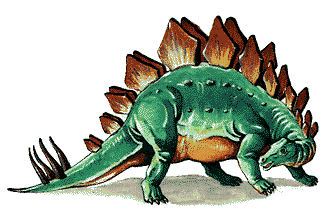What is a dinosaur?

The word “dinosaur” is often used incorrectly. In common usage, many people lump together all the ancient non-dinosaur reptiles (including the flying reptiles and marine reptiles) and even various ancient giant mammals.
The name “dinosauria” was coined by Dr. Richard Owen M.D., a friend of the famous French scientist Dr. George Cuvier. Owen first used the word in his “Report on British Fossil Reptiles” presented in 1841 to the British Association for the Advancement of Science. “Dinosaurs” is a combination of two Greek words. In a footnote, Owen defined dinosaurs as “deinos (fearfully great)” and “sauros (a lizard).” Thus the name literally means “fearfully great lizard.”
The term was eventually adopted by scientists around the world and is now quite familiar—even to young children.
Most, but not all, paleontologists classify dinosaurs as “reptiles.” This is because of similarities to reptile bone and tooth structures and due to the presence of scaly skin or bony plates (detected in some, but not all types of dinosaurs).
Although the technical definition of “dinosaur” is not absolutely established, there is general agreement about which animals should be included under this title. Still there is some confusion, as paleontologist Dr. Alan Charig once observed:
The “Dinosauria” have not yet been shown to form a natural group, and it may well be that they never will—for the simple reason that the natural group in question may not have existed! —Alan Charig, A New Look at the Dinosaurs (NYC: Mayflower Books, 1979, p. 15.
Most, if not all, paleontologists currently include only the following groups of animals under the term “dinosaur.”
- Prosauropods (example: Plateosaurus)
- Sauropods (example: Brachiosaurus)
- Ornithopods (example: Trachodon)
- Steogosaurians (example: Stegosaurus)
- Ankylosaurs (example: Ankylosaurus)
- Ceratopians (example: Triceratops)
- Coelurosaurs (example: Struthiomimus)
- Carnosaurs (example: Tyrannosaurus)
- Deinonychosaurs (example: Deinonychus)
- Segnosaurs (example: Segnosaurus)
- Ornithomimosaurs (example: Gallimimus)
See: Dinosaur Classification
- Plesiosaurs (example: Plesiosaurus, a long-necked marine “reptile”)
- Mosasaurs (example: Mosasaurus, a short-necked marine “reptile”)
- Pterosaurs (flying “reptiles”) (example: Pteranodon)
- Pelycosaurs (example: Dimetrodon)
- Therapsids (example: Lystrosaurus)
- Protorosaurs (example: Tanystropheus)
- Nothosaurs (example: Nothosaurus)
Technically, here is how researchers generally define dinosaurs. This is based on physical characteristics that all true “dinosaurs” are supposed to have in common:
- underslung legs that gave dinosaurs an erect posture
- a large hole in the bottom of their basin-shaped hip-socket
- a secondary palate (uncharacteristic of reptiles) that permits dinosaurs to eat and breathe at the same time
- a fairly straight thigh bone with an in-turned head
- two pairs of holes in the temporal region of the skull (diapsid skull)
- backward-pointing knees (or elbows) of the front legs
- forward-pointing knees of the rear legs (rather than pointing sideways)
- front legs shorter and lighter than the rear legs (in almost every case)
- a special bone (predentary) at the chin that capped the front of the bottom jaw in some dinosaurs (the ornithischians)
- land-dwelling creature, rather than marine or airborne
To Answers
  
Author: Paul S. Taylor, Christian Answers
Copyright © Paul S. Taylor, Christian Answers. All rights reserved.
| 




